[Balsamroots: The Genus Balsamorhiza in the Cascade Mountains of Oregon and Washington]
Carey's Balsamroot, Intermediate Balsamroot
Balsamorhiza careyana
Synonyms: Balsamorhiza careyana var. careyana, Balsamorhiza careyana var. intermedia
 -
- 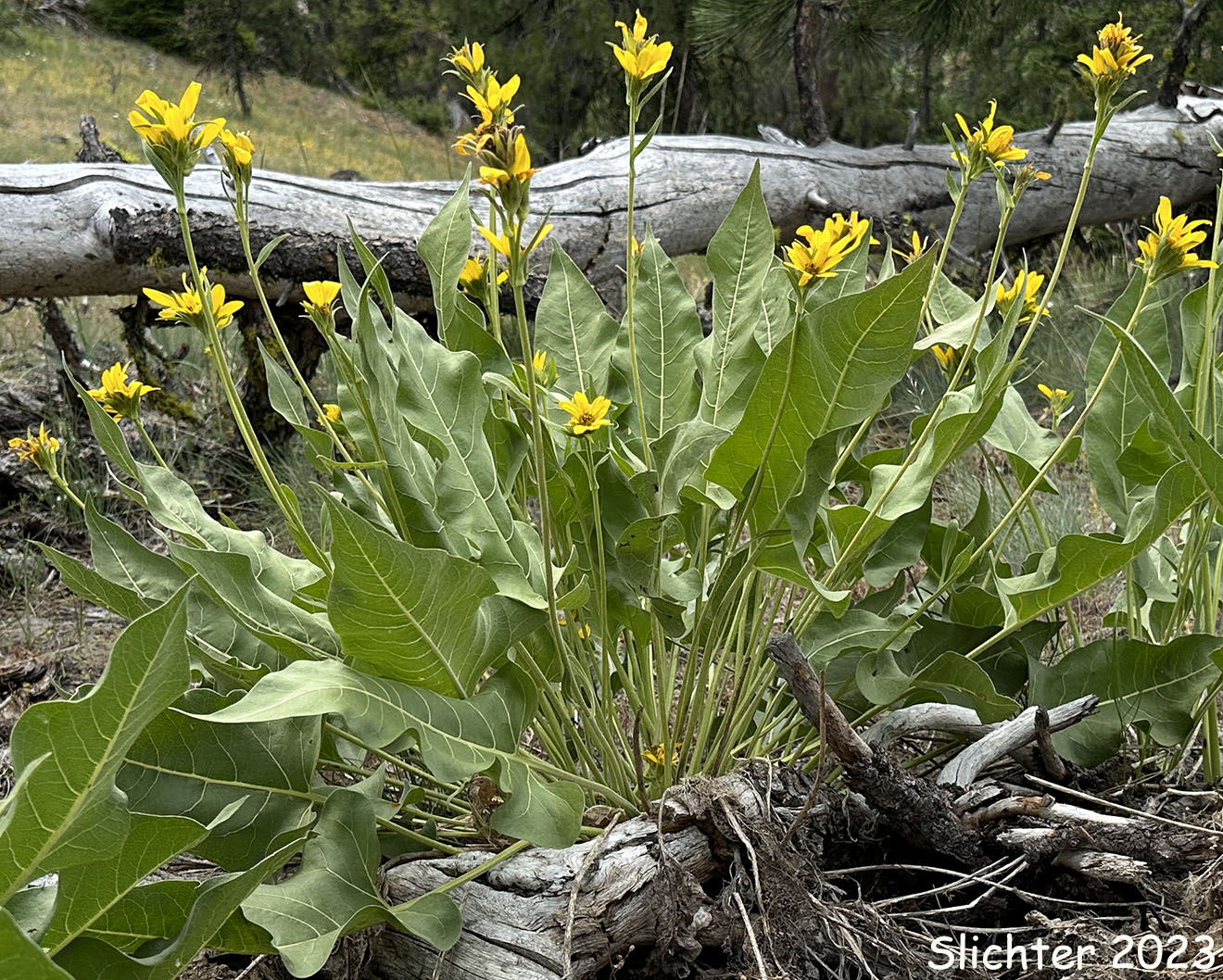
Carey's balsamroot as seen blooming at left on shallow soils along the School Canyon Trail #468, Badger Creek Wilderness.......May 10, 2015. The photo at right shows Carey's balsamroot (or possibly a hybrid with B. deltoidea) on a bald along the Cedar Creek Trail #457, Mount Hood National Forest.....June 27, 2023.
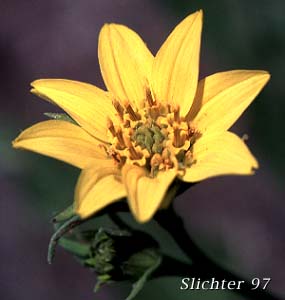 Flower head of Carey's Balsamroot, Intermediate Balsamroot: Balsamorhiza careyana (Synonyms: Balsamorhiza careyana var. careyana, Balsamorhiza careyana var. intermedia)....Rattlesnake
Hills northeast of Toppenish, WA.
Flower head of Carey's Balsamroot, Intermediate Balsamroot: Balsamorhiza careyana (Synonyms: Balsamorhiza careyana var. careyana, Balsamorhiza careyana var. intermedia)....Rattlesnake
Hills northeast of Toppenish, WA.
Characteristics:
The large, flat flower heads of Carey's balsamroot have a 2.5
cm wide yellowish central disk surrounded by 8 or 13 yellow ray flowers. The
ray flowers persist on the flower head after bloom. Flower heads may be solitary
to several per leafless stem, with the terminal head larger on variety intermedia.
Variety intermedia may also have up to 21 rays. The leaves are up to
30 cm long and up to 15 cm wide. The blades are heart-shaped to triangular-hastate.
Plants range from 20 to 100 cm high and the herbage ranges from smooth to glandular.
Carey's balsamroot flowers from March into June.
Carey's balsamroot is significantly less hairy than Balsamorhiza
sagittata, with the leaves being a bright green. The involucre is also
only slightly haired or woolly in contrast to the woolly involucre of B.
sagittata.
Although similar to Balsamorhiza deltoidea,
Carey's balsamroot keeps the dry papery rays after flowering has completed while
this trait does not appear in the former species (these two species do approach
each other in the mid Columbia River Gorge, but hybridization evidently does
not occur).
Habitat:
Carey's balsamroot is found in dry open habitats from the lowlands
extending well up into the mountains.. It has a preference for the deeper soils
on sloping ground rather than the rocky hilltops.
Range:
Carey's balsamroot may be found entirely east of the Cascade
Mountains from south-central British Columbia through central Washington into
north-central Oregon.
Variety intermedia may be found from southern British
Columbia south along the eastern base of the Cascades to the northern part of
the John Day and Deschutes Rivers, and then further south to Bend, OR. The two
varieties intergrade to the west and southwest of Heppner, OR. The Oregon Flora
Project shows this species (var. intermedia) as far west as Wygant State
Park, to the west of Hood River. It has also been reported from Tom McCall Nature
Preserve (at the main viewpoint) and a documented population can be found about
1/4 mile west of US 197 on the Washington side of the River. Variety intermedia
is most common on the Oregon side of the Columbia River from near Celilo east,
and is abundant on slopes above the lower Deschutes River.
Variety careyana may be found from central Washington
south to northern Umatilla and northern Morrow counties in Oregon. In the Columbia
River Gorge, variety careyana seems to be more common on the hillsides
above the mouth of the John Day River.
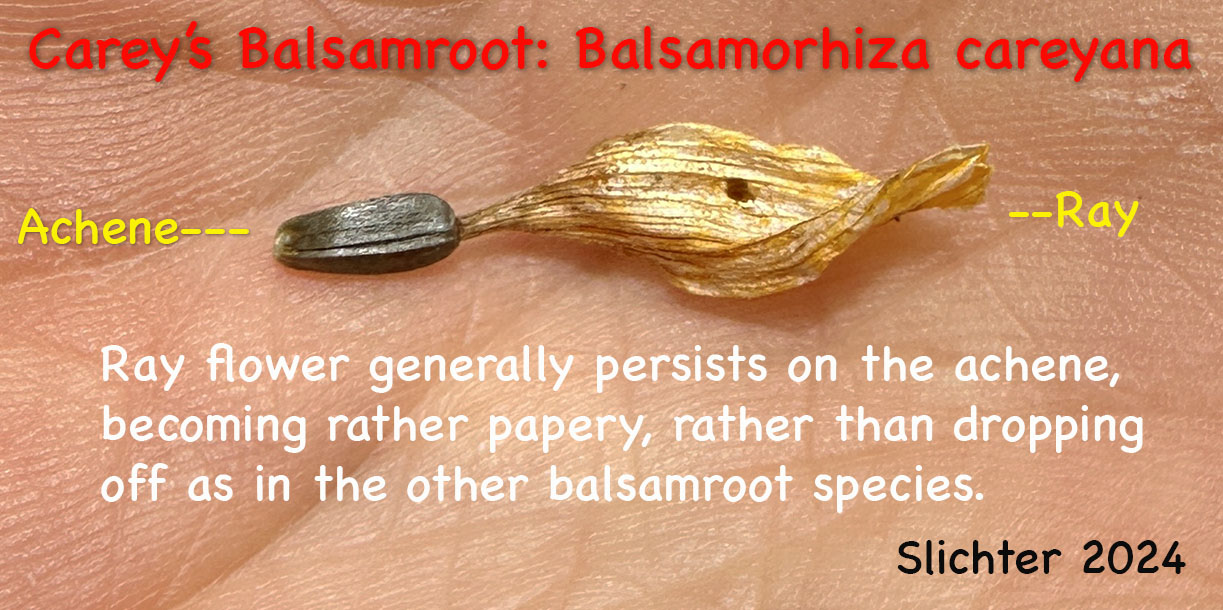 -
- 
Carey's balsamroot spotted along the Cedar Creek Trail #457, Mount Hood National Forest.......July 29, 2024. The images show floral characteristics to help identify this species.
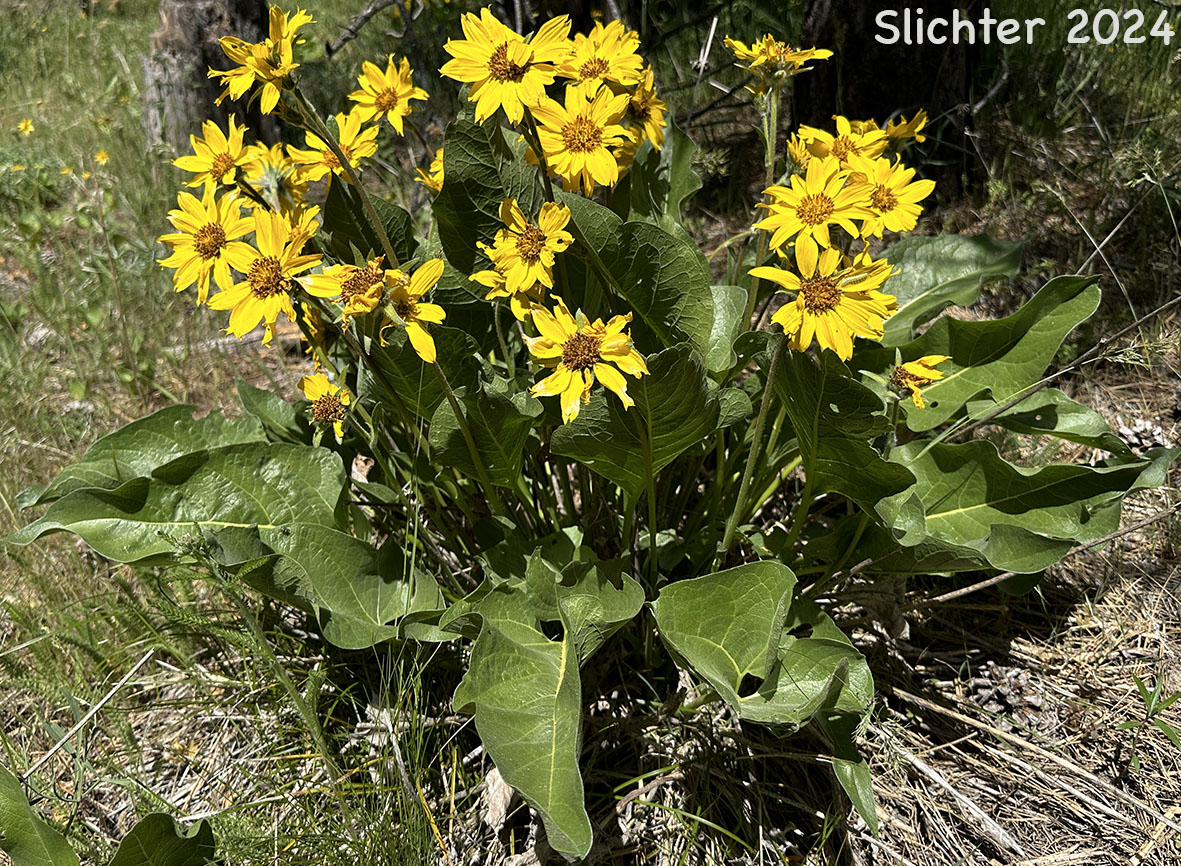 -
- 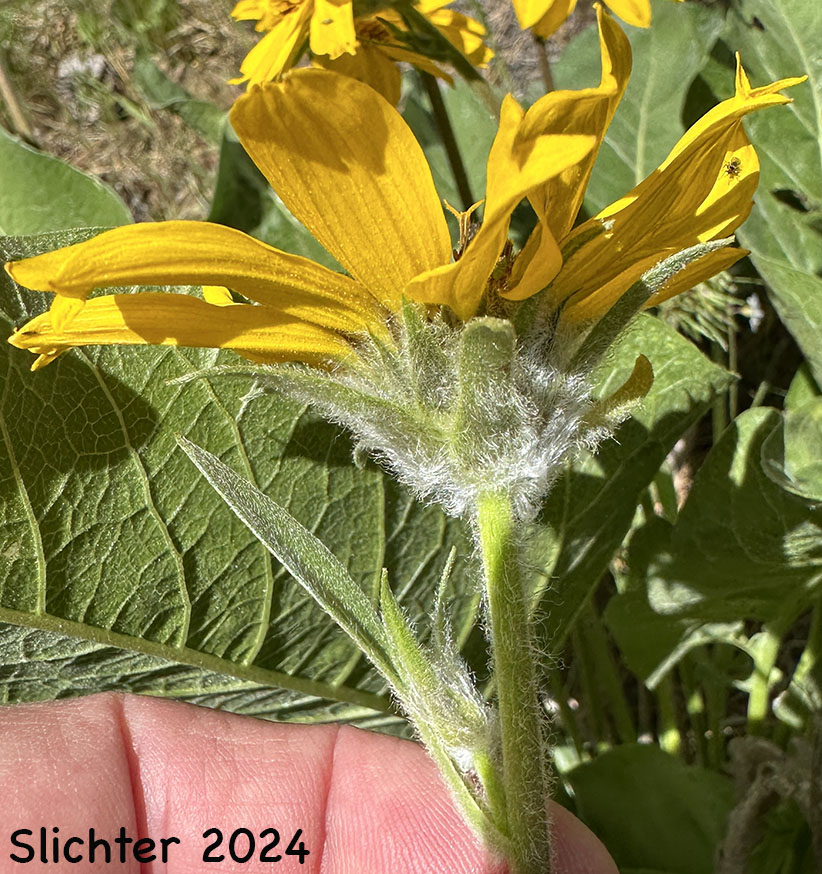
Carey's balsamroot blooming along What Road at the high point on Department of Natural Resources lands, Yakima County, WA.....May 31, 2024. (T16R16E S7)
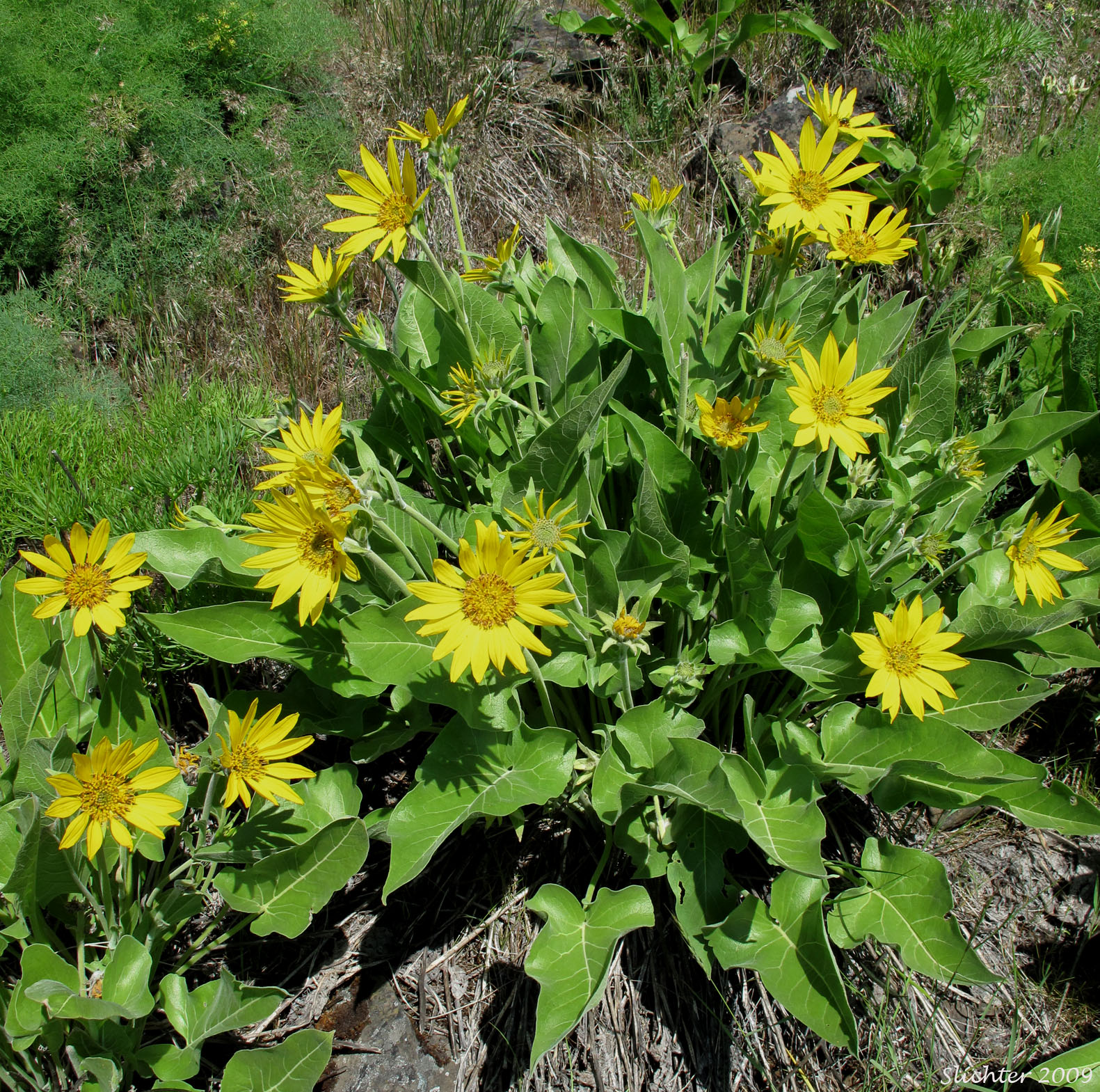 -
-  -
- 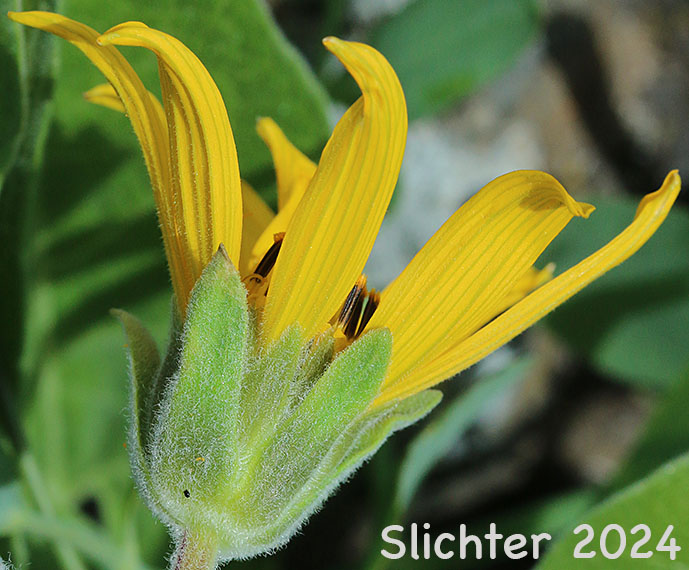
Carey's balsamroot as seen at left along Canyon Creek in the Klickitat State Wildlife Area.........May 8, 2009. The leaves of pungent desert parsley (Lomatium grayi) and Suksdorf's desert parsley (Lomatium suksdorfii) as well as an inflorescence of Hood River milkvetch (Astragalus hoodianus) can also be seen. The images at center and right show the invollucral bracts of Carey's balsamroot at the South Breaks, Klickitat Wildlife Area......April 21, 2024.
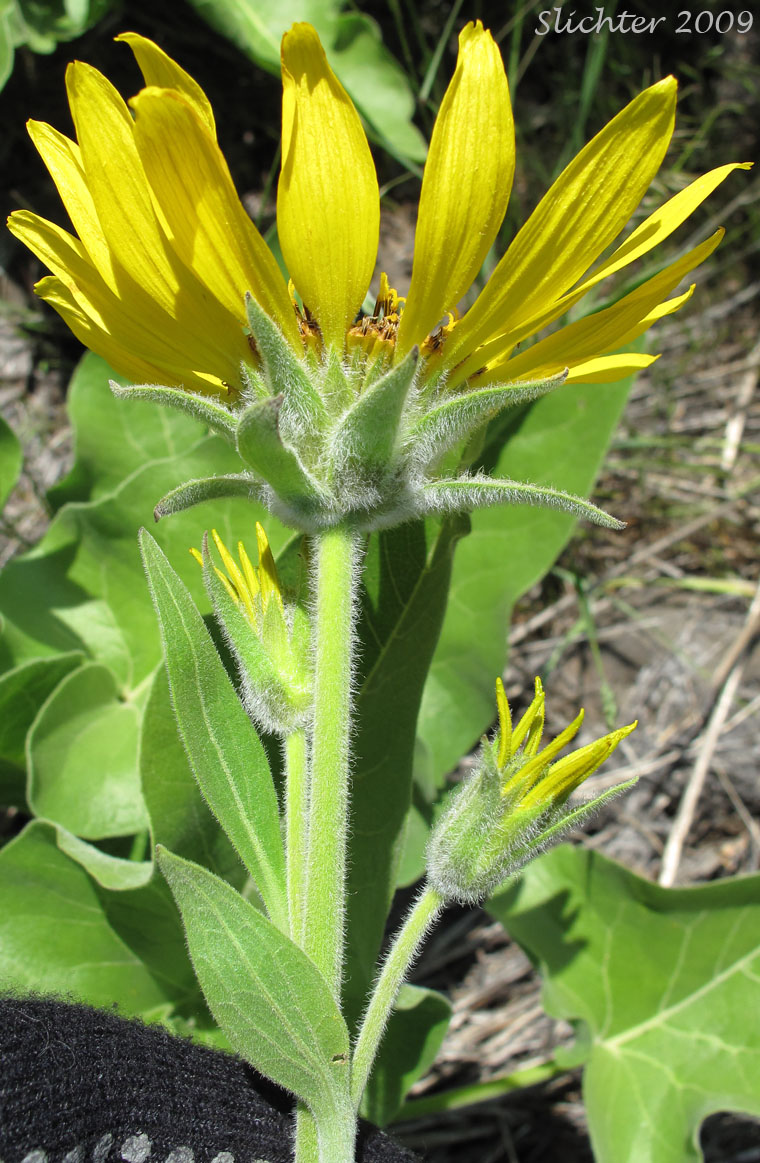 --
-- 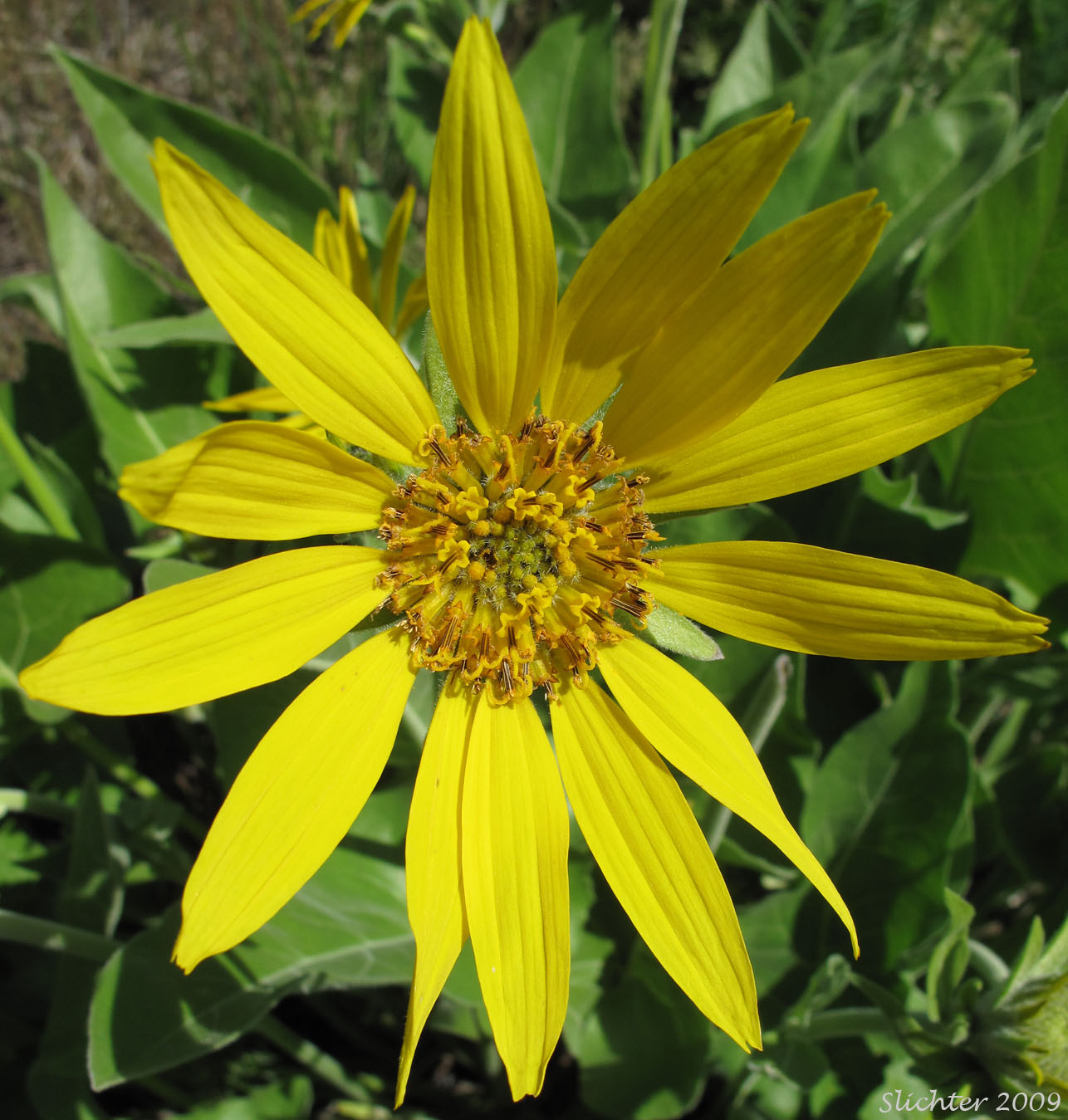
Photos of the leafy bracts covered with long, spreading
hairs and a flower head of Carey's balsamroot as seen at Canyon Creek in the Klickitat State Wildlife Area..........May 8, 2009. The bracts on some plants may be largely glabrous or more sparsely
haired than the specimen above. Note also the multiple flower heads on each stem.
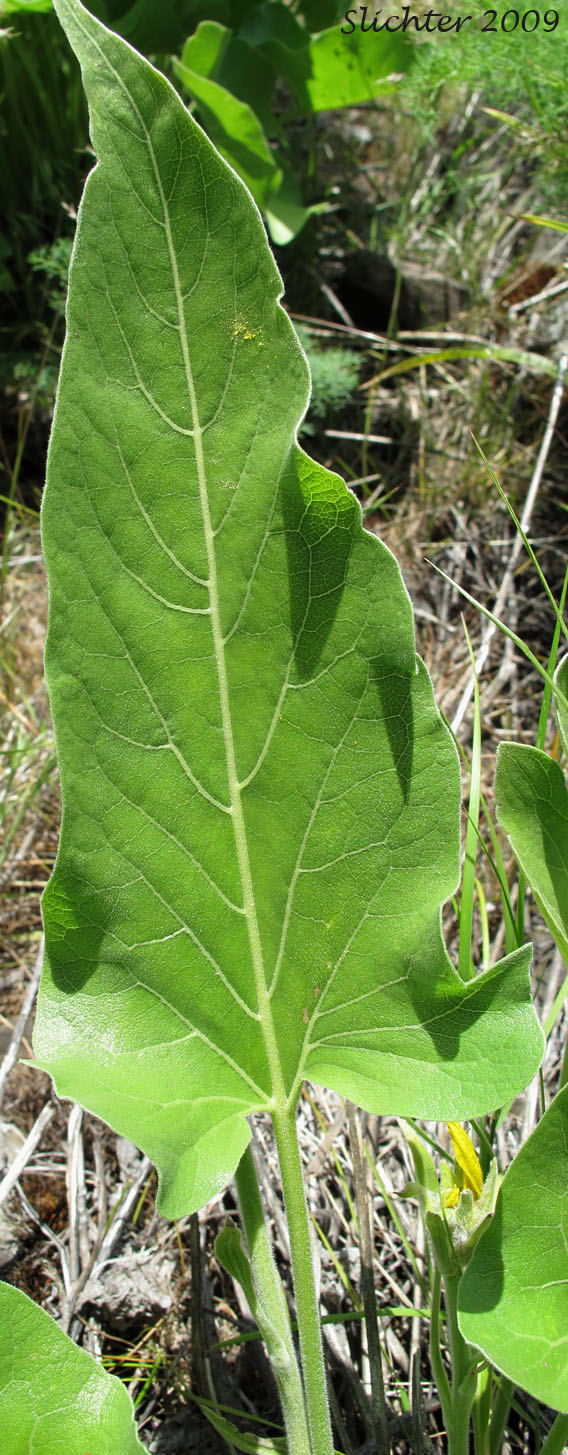 --
-- 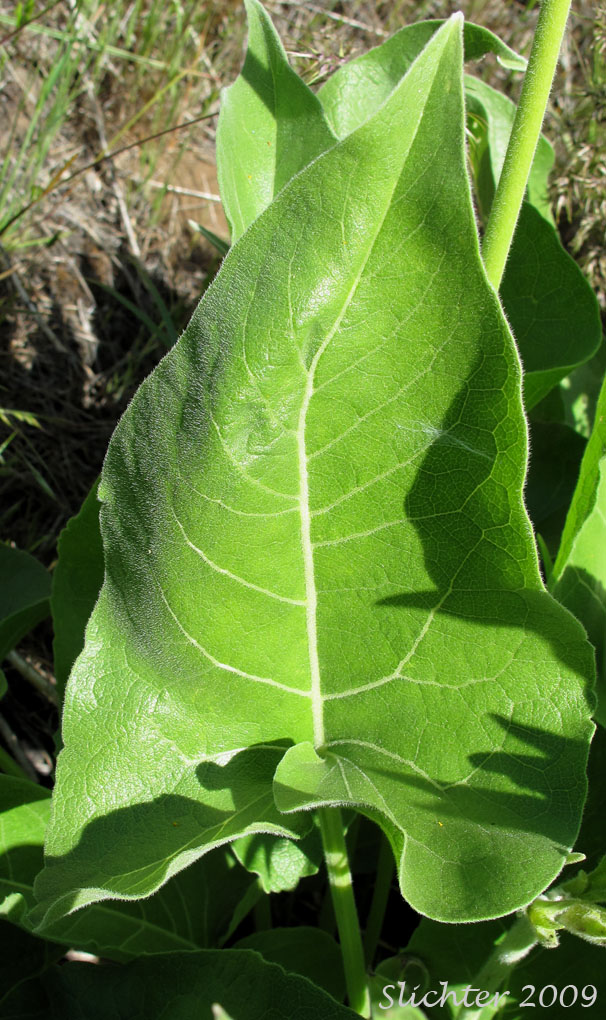
Examples of leaves of Carey's balsamroot as seen along Canyon Creek in the Klickitat State Wildlife Area.........May 8, 2009.
 -
- 
The image at left shows a close-up of the involucral bracts of Carey's balsamroot as seen in an area of sand dunes along
Washington Highway 14 near milepost 115.5............May 11, 2009. The image at right probably shows a hybrid plant between Balsamorhiza careyana and Balsamorhiza deltoidea as seen along the Cherry Orchard Trail about one mile east of Lyle, Washington........March 16, 2013.
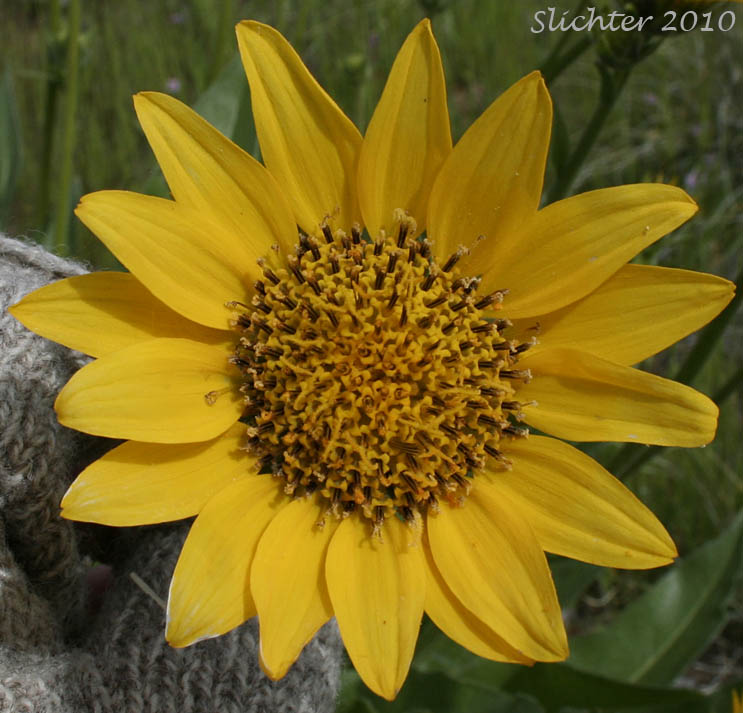 -
-  -
- 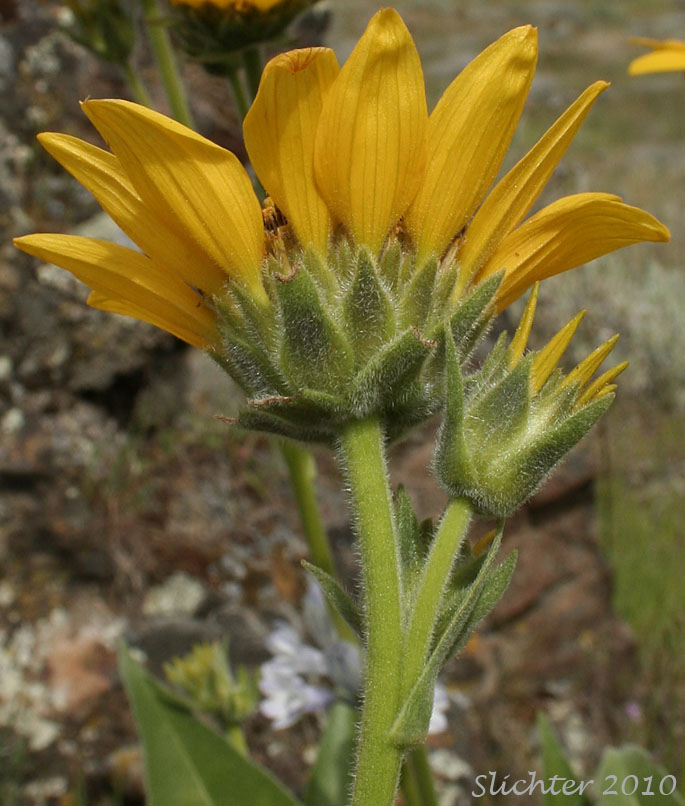
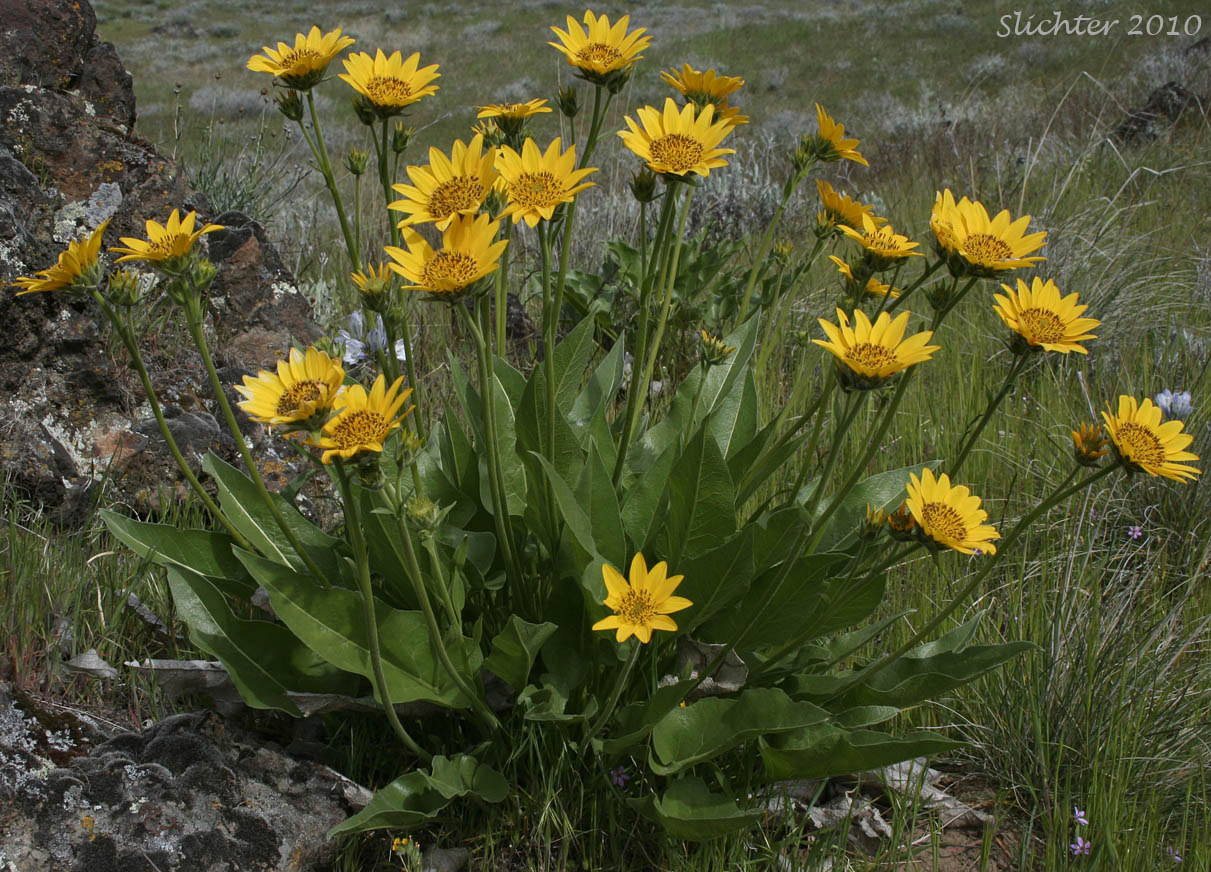
Close-ups of Carey's balsamroot as seen along Washington Highway SR 14 near milepost 115.5 in the eastern Columbia River Gorge.........April 18, 2010.
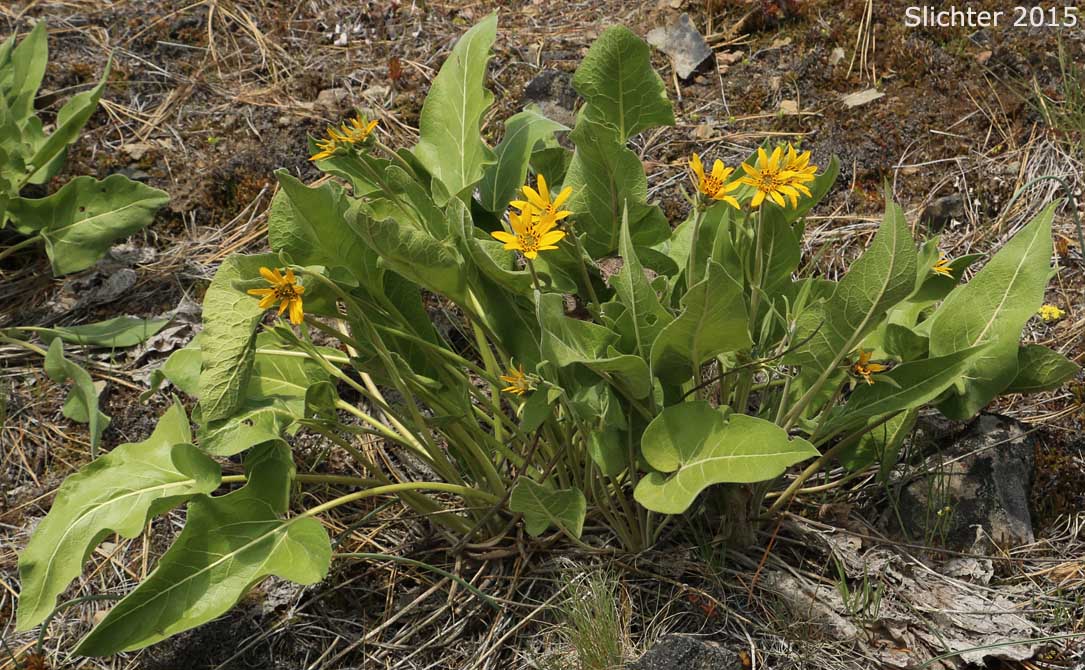
Carey's balsamroot blooming along the Eightmile Loop Trail at the southeast corner of Five Mile Butte, Mount Hood National Forest.........May 17, 2015.
 -
- 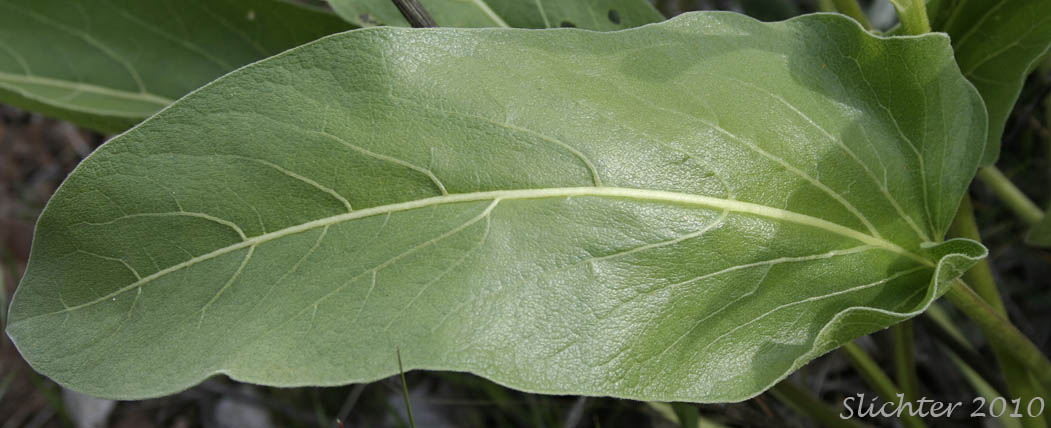 -
- 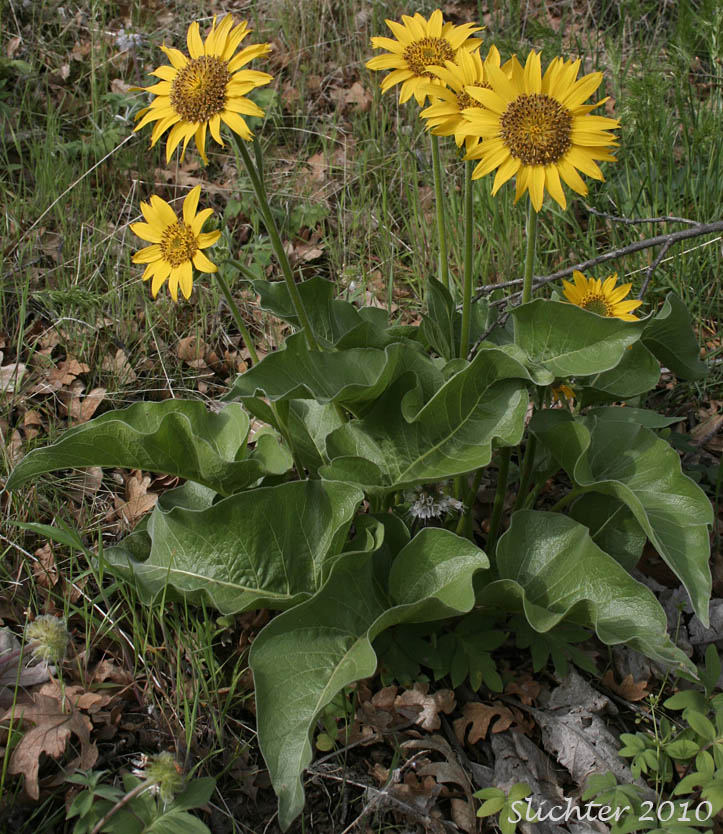
Additional photos of Carey's balsamroot as seen along the Bickleton Highway where it descends the eastern slope down to Rock Creek, Klickitat County.........April 18, 2010.
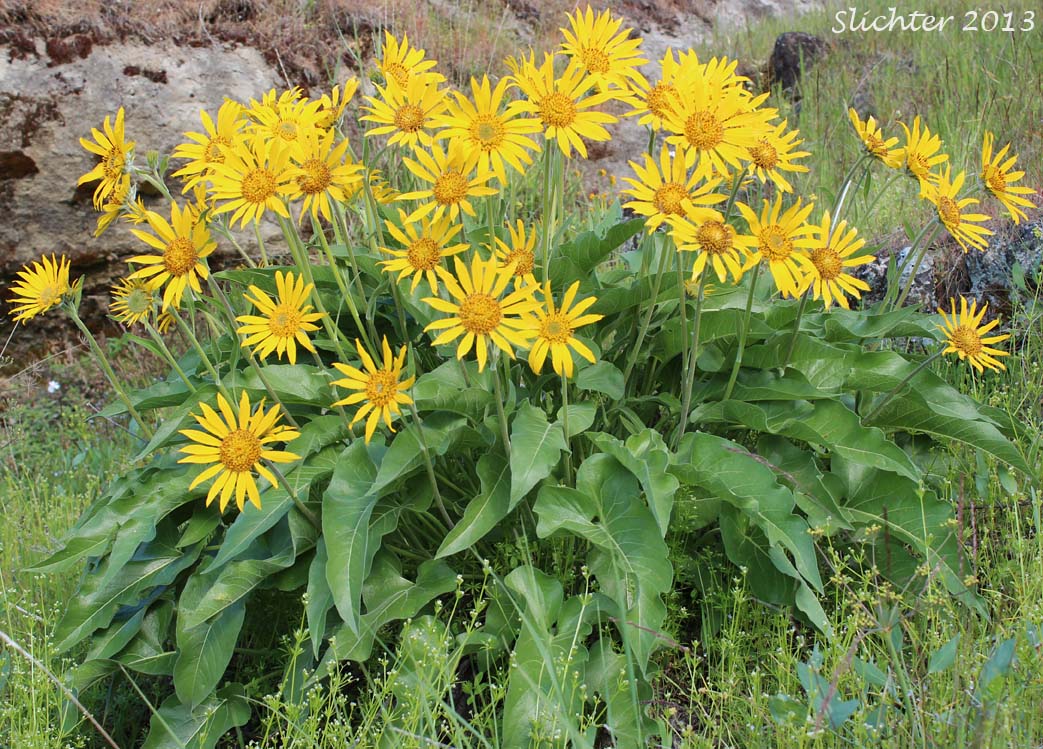
Carey's balsamroot (or a hybrid with Balsamorhiza deltoidea) as seen on Chenoweth Table at the west boundary of The Dalles, Oregon..........April 21, 2013.
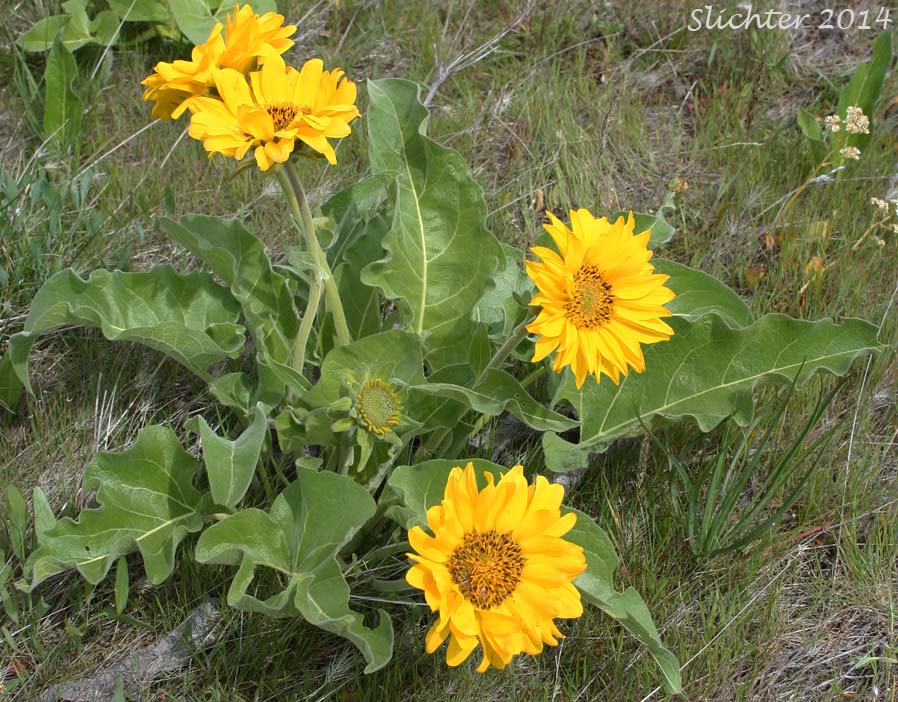 -
- 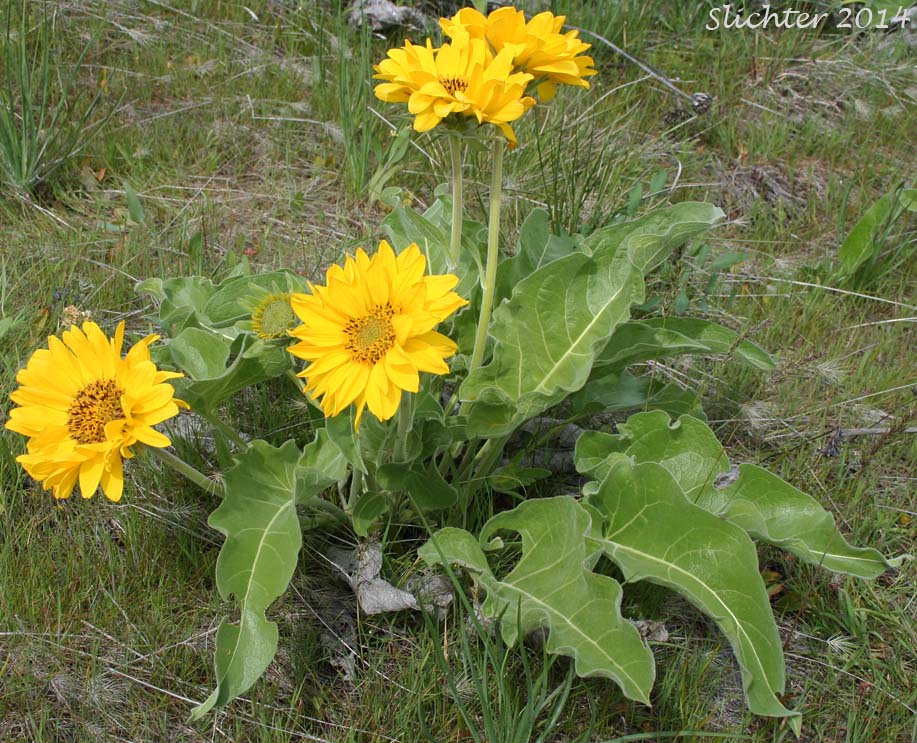
An example of Carey's balsamroot with double or triple rows of ray flowers as seen high on the southern slopes of Sevenmile Hill (USFS lands) to the northwest of The Dalles, OR............April 20, 2014.
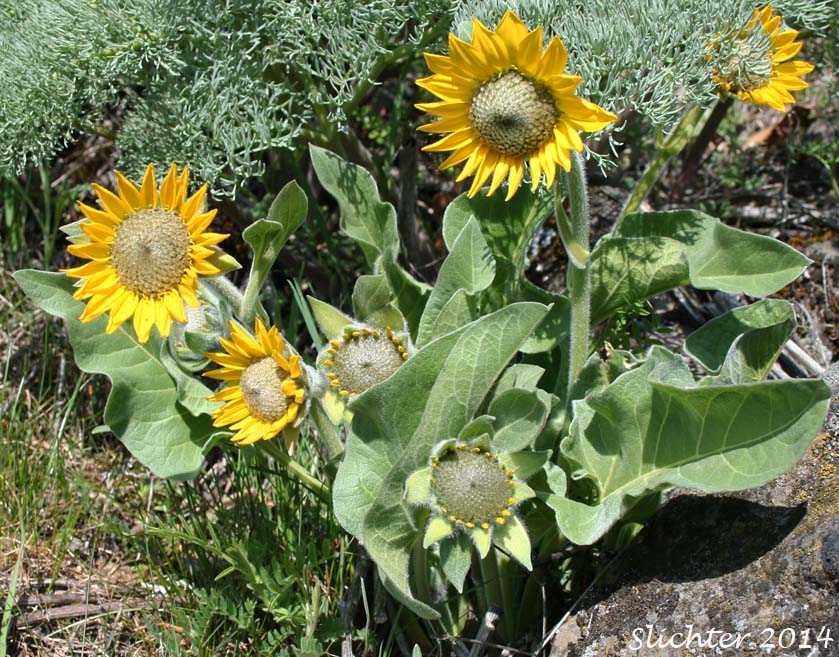 -
- 
The photo at left shows Carey's balsamroot (or a hybrid with Balsamorhiza deltoidea) as seen along the Memaloose Trail at Marsh Hill, Columbia River Gorge..........March 23, 2014. The photo at right shows another plant beginning to bloom high in the northwestern corner of the Columbia Hills State Park...........March 24, 2014.
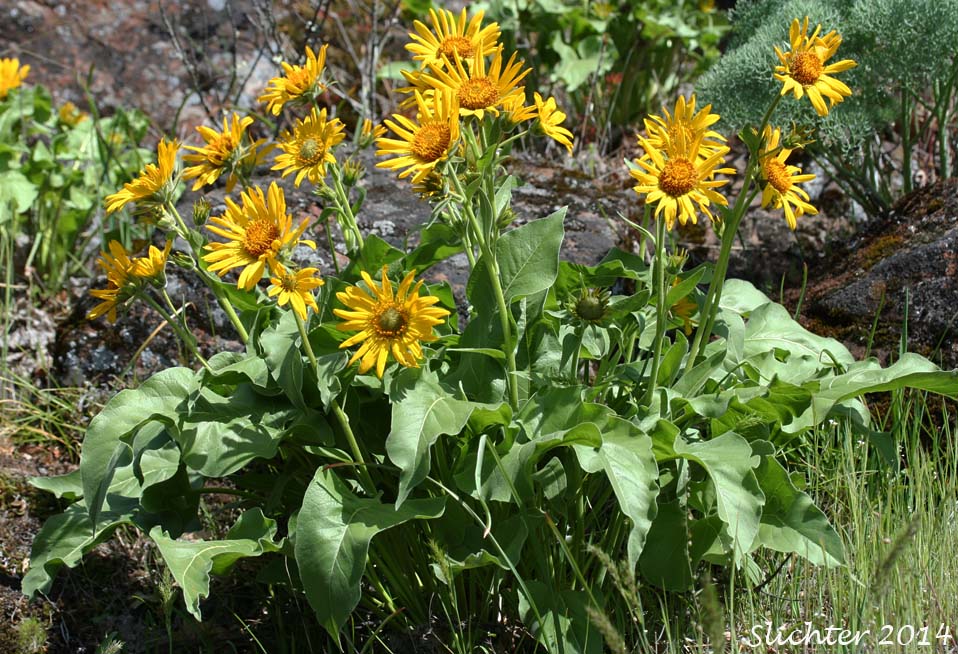
Carey's balsamroot as seen along a game trail along the east bank of upper Catherine Creek, Columbia River Gorge.........April 8, 2014.
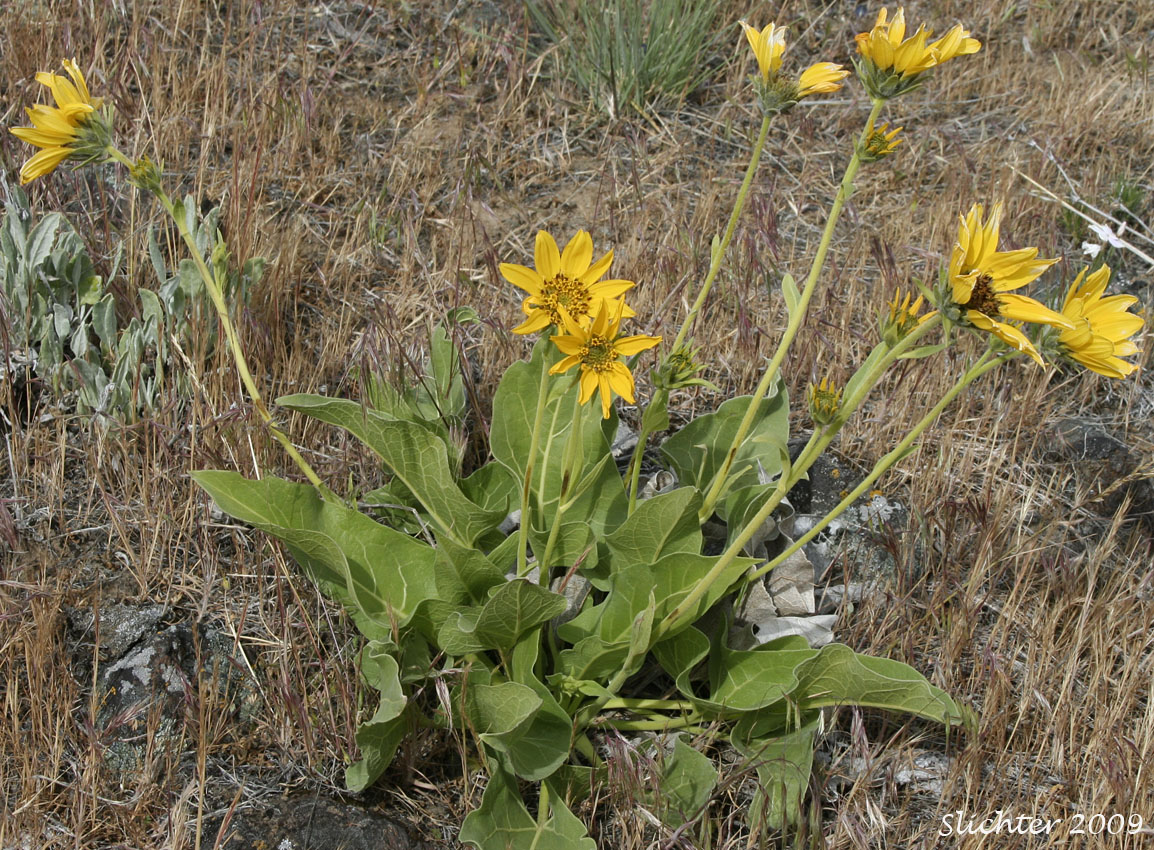
Carey's balsamroot as seen in an area of sand dunes along
Washington Highway 14 near milepost 115.5...........5/11/2009. Note that there may be two to three flower heads per stem with the uppermost flower head the largest.
Paul Slichter
 Flower head of Carey's Balsamroot, Intermediate Balsamroot: Balsamorhiza careyana (Synonyms: Balsamorhiza careyana var. careyana, Balsamorhiza careyana var. intermedia)....Rattlesnake
Hills northeast of Toppenish, WA.
Flower head of Carey's Balsamroot, Intermediate Balsamroot: Balsamorhiza careyana (Synonyms: Balsamorhiza careyana var. careyana, Balsamorhiza careyana var. intermedia)....Rattlesnake
Hills northeast of Toppenish, WA.